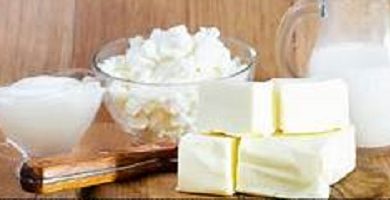Health Benefits of Shawarma
Health Benefits of Shawarma
Shawarma is a popular Middle Eastern dish made from thinly sliced, seasoned meat that is typically cooked on a vertical rotisserie.

The meat is often lamb, chicken, beef, or a mixture thereof. The cooking process involves stacking the meat on a vertical spit, which rotates slowly as it cooks.
The meat is usually seasoned with a blend of spices, and herbs, and sometimes marinated in yogurt or other ingredients to enhance flavor and tenderness.
Once the meat is cooked, it is shaved off the rotisserie in thin slices and often served in a variety of ways.
Shawarma is commonly enjoyed wrapped in a flatbread such as pita or lavash, along with toppings such as lettuce, tomatoes, cucumbers, onions, and sauces like tahini or garlic sauce.
It can also be served on a plate with rice, vegetables, and sauces on the side.
Health Benefits of Eating Shawarma
Shawarma, a Middle Eastern dish made of seasoned meat (often lamb, chicken, beef, or a combination thereof) cooked on a vertical rotisserie, has several potential health benefits, depending on the ingredients and preparation methods:
Protein
Shawarma is typically made with meat, which is a good source of protein. Protein is essential for muscle repair and growth, as well as for maintaining overall body function.
Vitamins and Minerals
Depending on the ingredients used, shawarma can provide various vitamins and minerals. For example, chicken shawarma may offer B vitamins such as niacin and B12, as well as minerals like iron and zinc.
Healthy Fats
While the fat content of shawarma can vary depending on the type of meat and how it’s prepared, certain types of fat, such as monounsaturated fats found in olive oil (often used in shawarma marinades), can be beneficial for heart health.
Fiber and Vegetables
Shawarma is often served with vegetables such as lettuce, tomatoes, cucumbers, and onions.
These vegetables can add fiber to the meal, which is important for digestive health and can help promote feelings of fullness.
Antioxidants
Antioxidants found in some ingredients used frequently in shawarma, such as garlic and spices like cumin and turmeric, may aid in preventing cell damage from free radicals.
Portion Control
While shawarma can be calorie-dense, particularly if it’s served with large portions of meat and high-fat sauces, it can also be relatively easy to control portion sizes.
Opting for smaller portions or choosing leaner meats can help make it a healthier option.
Cultural and Social Benefits
Enjoying shawarma as part of a balanced diet can contribute to overall well-being by providing a sense of cultural connection and enjoyment of food in a social context.
Nutritional Benefits of Shawarma
With its rich content of Vitamins A, B, and C, folate, protein, healthy fats, and carbohydrates, shawarma offers a high nutritional profile coupled with its distinctive grilled taste.
This combination has propelled shawarma to widespread popularity worldwide. Particularly cherished as one of Egypt’s and the Arabian Peninsula countries’ most beloved street foods, its nutritional benefits and flavorful appeal have captured the hearts and taste buds of many.
However, it’s important to note that shawarma can also be high in sodium, especially if it’s served with salty sauces or pickled vegetables.
Additionally, traditional shawarma may be served with white bread or high-carbohydrate wraps, which can contribute to a higher calorie and carbohydrate content.
As with any food, moderation and mindful ingredient choices are key to enjoying shawarma as part of a healthy diet.
Is Shawarma healthy?
Whether shawarma is considered healthy depends on various factors such as its ingredients, portion size, and how it’s prepared. Here’s a breakdown:
Protein: Shawarma is typically made with meat, which is a good source of protein necessary for muscle repair and overall body function.
Vitamins and Minerals: Depending on the ingredients used, shawarma can provide essential vitamins and minerals, such as B vitamins, iron, and zinc.
Healthy Fats: Some types of shawarma, especially those made with lean meats like chicken or turkey, can provide healthy fats, particularly if it’s cooked with olive oil.
Vegetables: Shawarma often includes vegetables such as lettuce, tomatoes, cucumbers, and onions, which contribute fiber, vitamins, and minerals to the meal.
Sodium and Calories: However, shawarma can be high in sodium, especially if it’s served with salty sauces or pickled vegetables.
Additionally, traditional shawarma may be served with white bread or high-carbohydrate wraps, which can contribute to a higher calorie and carbohydrate content.
Portion Size and Preparation: The healthiness of shawarma also depends on portion size and how it’s prepared.
Opting for smaller portions, leaner meats, and lighter sauces can make it a healthier option.
In summary, shawarma can be a part of a healthy diet when consumed in moderation and made with lean meats, plenty of vegetables, and lighter sauces.
However, it’s essential to be mindful of portion sizes and ingredients, particularly sodium and calorie content, to ensure they fit into a balanced diet.



